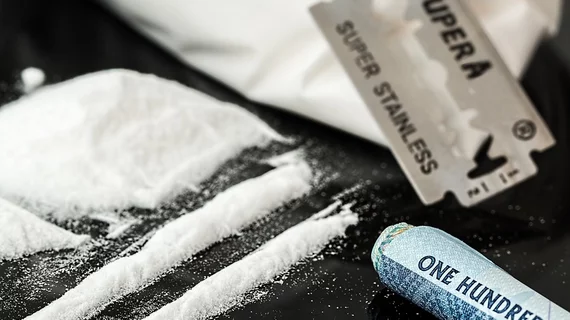Teens face up to 7 times higher odds of AMI with cocaine, cannabis use
Cocaine, amphetamines and cannabis could raise adolescents’ risk for acute myocardial infarction (AMI), in some cases increasing a teen’s odds for MI by up to seven times, according to research out of Shanghai Jiao Tong University School of Medicine in China.
A trial led by Kamleshun Ramphul, MD, analyzed data from the 2012 Kids’ Inpatient Database, Healthcare Cost and Utilization Project and Agency for Healthcare Research and Quality, which spanned more than 2,000 hospitals and hundreds of teenage patients.
“Multiple adult-related studies have confirmed the increased risk of AMI in cocaine, amphetamine and cannabis users,” Ramphul wrote in an American Journal of Cardiology report published Nov. 2. “Since there are limited data involving the risk of these substances with AMI in teenagers, we hereby conducted a retrospective analysis.”
Ramphul and his team studied 333 weighted (238 unweighted) cases of AMI registered in the database. Of the teens enrolled in the trial, 53 reported using cannabis, 23 said they used cocaine and 15 reported amphetamine use. Amphetamines, considered distinct from methamphetamines, include drugs known colloquially as “speed” or “uppers.”
After logistic regression analysis, Ramphul found that cannabis was associated with 5 times higher odds of AMI, amphetamines were linked to 4.1 times higher odds of AMI and cocaine use was associated with 7.4 times the risk.
Forty patients died within the study period, resulting in a a 12.1 percent mortality rate among teens with AMI.
“There are multiple pathways involved in the pathogenesis of AMI with the use of either of these drugs,” Ramphul wrote, referring to cocaine and amphetamines. “Cocaine and amphetamines can inhibit the reuptake of norepinephrine, which leads to an increase in blood pressure as well as heart rate. As a result, the myocardial demand for oxygen will increase.”
The drugs can also trigger coronary vasospasm, he said, inhibiting healthy oxygen delivery and elevating a person’s risk for MI. As far as cannabis goes, Ramphul said studies have tied marijuana use to vasodilation, reflex tachycardia and an increased risk for coronary arterial vasospasm.

